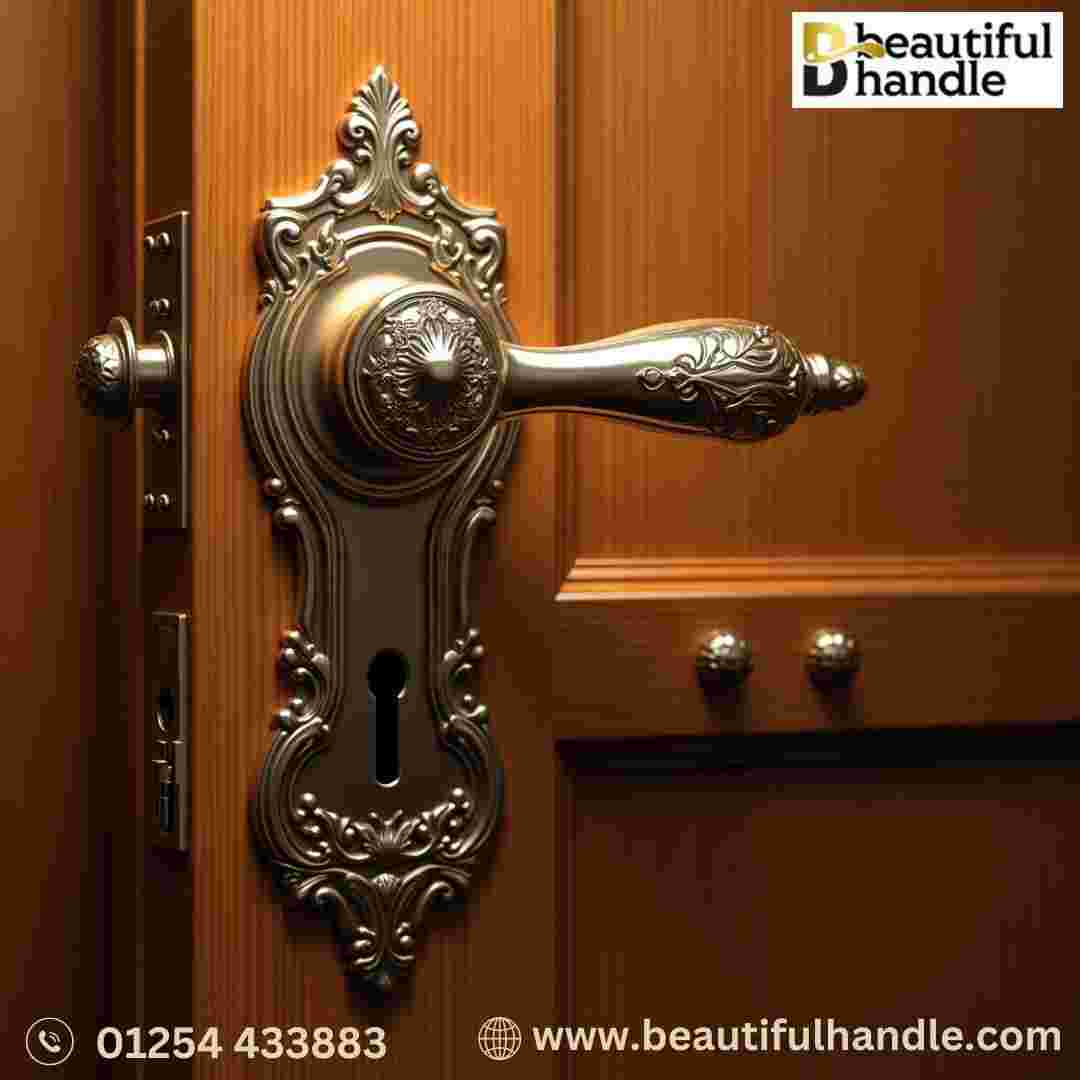Door Furniture” — also known as door hardware — refers to the various functional and decorative items attached to a door or drawer. This includes handles, knobs, hinges, locks, letterplates, knockers, and more. Often overlooked, door furniture plays a key role in aesthetics, functionality, security, and accessibility. This guide walks you through types, trends, and care tips to help you choose the ideal door furniture for your home or project.
1. Why Quality Door Furniture Matters
First Impressions
Door furniture is the handshake of your home—front door hardware and stylish handles can boost curb appeal significantly.
Function & Accessibility
From smooth access via lever handles to smart locks offering keyless entry, good door furniture enhances usability. For instance, lever-type handles require less than 5 lbs force and are wheelchair-friendly.
Security
Locks and deadbolts—especially mortise, smart, and keypad versions—offer layered security. Exterior doors usually use deadbolts or smart locks while interior ones might use lever locks or knob locks
Durability & Maintenance
High-quality finishes (stainless steel, marine-grade, anti-microbial coatings) resist wear and weather, ensuring your hardware remains functional and beautiful.
2. Main Categories of Door Furniture
Handles & Knobs
- Lever Handles: Easy to use, ADA compliant, perfect for modern interiors.
- Door Knobs: Classic and decorative; often used in period or traditional homes.
Materials range from brass, bronze, steel to wood and porcelain.
Locks & Latches
- Knob/Lever Locks: Common for bedrooms or bathrooms.
- Deadbolts & Mortise Locks: Use for external doors for extra security.
- Smart Locks: Keyless entry with app control, fingerprint or keypad options.
Hinges
- Butt Hinges: Standard for residential interior doors.
- Concealed / Euro Hinges: Hidden hinges for sleek aesthetics.
Front Door Furniture
This includes not just handles, but also knockers, letterplates, numerals, spyholes, and smart doorbells.
Crash/Panic Bars
Used primarily on commercial or emergency exit doors to comply with fire codes.
3. 2025 Trends in Door Furniture
Warm & Earthy Finishes
Oil-rubbed bronze, unlacquered brass, aged metals and matte black are dominating interiors this year.
Mixing Finishes
Combine brass knobs with black hinges or steel accents to bring depth and personality to your space.
Minimalist & Concealed
Flush doors, hidden hinges, and no-hardware looks are growing in popularity, creating seamless, modern interiors.
Statement Handles
Oversized entry sets, long-bar handles, crystal knobs, and artistic shapes make bold statements.
Smart Meets Stylish
Integration of fingerprint scanners and app-controlled locks without losing design aesthetic is a top trend.
Sustainable & Anti-Microbial
Sustainable materials and coatings that inhibit microbes are especially important in high-touch areas.
Ergonomic & Accessible
Handles designed for comfort and easy grip cater to elderly and differently abled users.
4. Choosing the Right Door Furniture
Match Style & Function
- Heritage Homes → Traditional knobs, antique brass finishes, ornate knockers.
- Modern Interiors → Sleek levers, matte black, flush concealed hardware.
Consider Material Durability
Exterior doors need weather-resistant materials, marine-grade stainless, coated aluminum, or bronze. Interiors show off materials like wood or ceramic knobs.
Ensure Security & Code Compliance
Use deadbolts or mortise locks for the exterior; ensure panic bars meet the building code on commercial exits.
Factor in Accessibility
Levers reduce strain; hardware must be operable with ≤ 5 lbs force per ADA guidelines.
Smart Integration
Plan to wire or power ahead for electronic locks or finger sensors, ensuring aesthetic harmony with the door design.
5. Maintenance Tips for Longevity
- Lubricate hinges, locks, and bolts annually.
- Clean finishes with gentle soap to avoid damage.
- Tighten screws regularly to prevent wiggling.
- Check seals on electronic locks for weather resistance.
- Protect finishes from corrosive agents in coastal or industrial areas.
- Replace damaged parts immediately to prevent further wear.
FAQ
Q1: “What is door furniture?”
Door furniture includes functional and decorative items attached to a door—like handles, knobs, hinges, locks, knockers, and letterplates.
Q2: “What types of door furniture are available?”
The main types are handles & knobs, locks & latches, hinges, front door accessories, and panic bars.
Q3: “How do I choose the best door furniture finish?”
Match finishes (e.g., matte black, aged brass) to your door’s style. Warm tones suit heritage homes; matte black or concealed styles fit modern aesthetics.
Q4: “What is the latest trend in door furniture?”
In 2025, trending door furniture includes matte/earth finishes, smart tech, concealed hinges, living patina materials, ergonomic levers, and bold statement pieces.
Q5: “How do I maintain door furniture?”
Clean with mild soap, lubricate moving parts, tighten screws, protect finishes, and check seals annually.
Q6: “Is concealed door furniture worth it?”
Absolutely! Concealed hinges and flush systems provide a sleek look, minimal maintenance, and integrate seamlessly with modern interiors.
Conclusion
Door furniture marries form and function: from enhancing security through smart locks and durable hinges, to elevating design with statement handles and warm finishes. Whether you're renovating or building new, choosing the right hardware can transform your space—boosting both curb appeal and daily usability.




